Fair dealing
FAIR DEALING
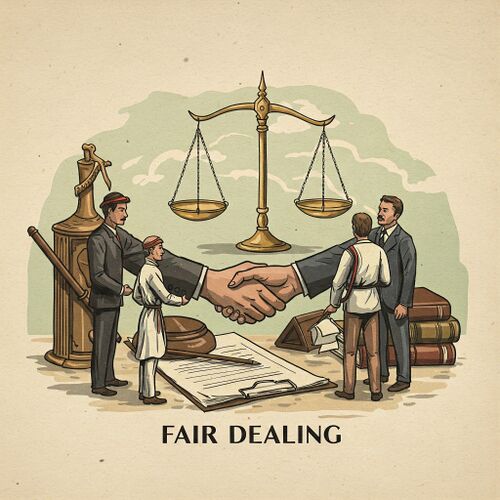
ETYMOLOGY
In general context the word 'fair'[1] means appropriate or acceptable and the word 'dealing'[2] means relations that people have in business. Therefore an appropriate/acceptable relation that is created in a business is known as fair dealing. But in copyright laws, the word 'fair dealing' refers to a legal policy that allows people to use short pieces of copyright material without permission for news reporting, teaching, research, etc.
WHAT IS "FAIR DEALING"?
Fair dealing[3], in the context of copyright laws, is a legal exception that allows the use or "dealing" with a copyright protected work without authorisation or payment of copyright royalties. The fair dealing exception in the Copyright Act allows you to use other people’s copyright protected material for the purpose of research, private study, education, satire, parody, criticism, review or news reporting, provided that what you do with the work is ‘fair’. If your purpose is criticism, review or news reporting, you must also mention the source and author of the work for it to be fair dealing.
OFFICIAL DEFINITION
Section 13 of the Indian Copyrights Act, 1957, protects copyrights for a variety of creative works such as music, books, art, and cinema. Section 17 specifies who will be the first owner of the copyright. Section 14 grants copyright owners a variety of rights, including the ability to reproduce, distribute, and so on. Section 14 states that simply having the idea of a work does not constitute infringement; only when the work exists in a tangible form does the copyright owner have rights to it. Notwithstanding the exclusive rights granted to copyright holders, these rights are not without limits.
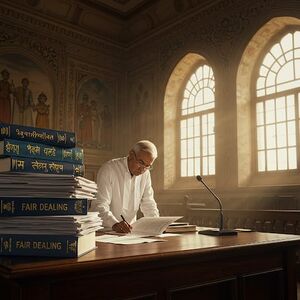
According to section 52 of the Indian copyright act[1]
52. Certain acts not to be infringement of copyright.— (1) The following acts shall not constitute an infringement of copyright, namely,— 4 [(a) a fair dealing with any work, not being a computer programme, for the purposes of— (i) private or personal use, including research; (ii) criticism or review, whether of that work or of any other work; (iii) the reporting of current events and current affairs, including the reporting of a lecture delivered in public. Explanation— The storing of any work in any electronic medium for the purposes mentioned in this clause, including the incidental storage of any computer programme which is not itself an infringing copy for the said purposes, shall not constitute infringement of copyright.]
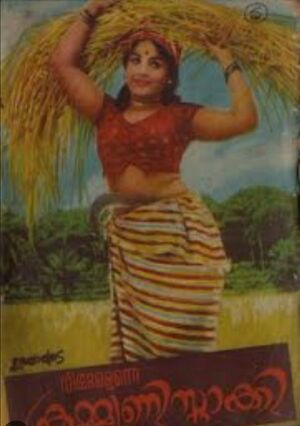
Section 52 of the Act outlines specific acts that do not constitute copyright infringement, effectively defining the scope of fair dealing within the Indian legal framework.While the term "fair dealing" is not explicitly defined in the Act, its application has been interpreted through various judicial decisions like in the case of Civic Chandran v. Ammini Amma[2], the Kerala High Court held that even substantial copying of a copyrighted work could be permissible under the fair dealing exception if the copying serves the public interest. The Kerala High court also provided certain factors that should be taken into consideration while checking whether the reproduction amounts to copyright infringement or not, namely:-
- The quantum and value of the matter taken in relation to the comments or criticism;
- The purpose for which it is taken;
- And the likelihood of competition between the two works
STATUTORY EXCEPTIONS
Section 52 of the act states where the use of copyrighted material does not constitute infringement
Fair Dealing Provisions:[3]
1.Private or Personal Use, Including Research: Allows individuals to use copyrighted works for personal study or research without infringement.

2.Criticism or Review: Permits the use of works when critiquing or reviewing the material.
3. Reporting of Current Events and Affairs: Enables the use of works in the context of news reporting and current events.
4. Computer Programmes:
- Making copies or adaptations by lawful possessors for utilisation or backup purposes.
- Acts necessary to achieve interoperability with other programs.
- Observing, studying, or testing the functioning of the program to understand underlying ideas and principles.
- Making copies or adaptations for non-commercial personal use.
5.Transient or Incidental Storage:
- Temporary storage during electronic transmission or communication to the public.
- Storage for providing electronic links, access, or integration, provided it is not expressly prohibited by the right holder.
6.Judicial and Legislative Uses:
- Reproduction for judicial proceedings or reporting thereof.
- Reproduction of works prepared by legislative secretariats for exclusive use by members of the legislature.

7.Educational and Instructional Uses:
- Reading or recitation in public of reasonable extracts.
- Publication of short passages in collections intended for instructional use.
- Reproduction by teachers or pupils in the course of instruction.
- Performance in educational institutions before a limited audience.
8.Public Performance and Communication:
- Performance by an amateur club or society to a non-paying audience or for the benefit of a religious institution.
- Use in the course of bona fide religious ceremonies or official ceremonies held by the government or local authorities.
9.Libraries and Archives:
- Storing of works by non-commercial public libraries for preservation.
- Making limited copies of unavailable books for library use.
- Reproduction of unpublished works kept in libraries, museums, or other institutions for research or private study.
10.Reproduction of Official Works:
- Reproduction or publication of matters published in official gazettes, Acts of legislatures, reports of committees, commissions, councils, boards, or other like bodies appointed by the government, and judgments or orders of courts or tribunals.
11.Artistic Works in Public Places:
- Making or publishing paintings, drawings, engravings, or photographs of works of architecture or sculptures permanently situated in public places.
- Inclusion of artistic works in cinematograph films, provided such inclusion is incidental or in the background.
12.Adaptations and Reproductions:
- Use by the author of artistic works of any mould, cast, sketch, plan, model, or study made by him for the purpose of the work.
- Making of three-dimensional objects from two-dimensional artistic works for industrial application.
- Reconstruction of buildings or structures according to architectural drawings or plans.
13.Ephemeral Recordings:
- Making of ephemeral recordings by broadcasting organisations for their own broadcasts and retention for archival purposes.
14.Accessible Formats for Persons with Disabilities:
- Adaptation, reproduction, issue of copies, or communication to the public of any work in any accessible format to facilitate access for persons with disabilities.
15.Incidental Use in Imports:
- Importation of copies of literary or artistic works, such as labels, company logos, or promotional or explanatory material, that are purely incidental to other goods or products being imported lawfully.
FAIR DEALING AS DEFINED IN INTERNATIONAL INSTRUMENT
Article 13[4] of the TRIPS Agreement
Article 13: Limitations and Exceptions
Members shall confine limitations or exceptions to exclusive rights to certain special cases which do not conflict with a normal exploitation of the work and do not unreasonably prejudice the legitimate interests of the right holder.
Article 9(2) and10 of the Berne Convention
[5]Article 9(2) of the Berne Convention deals with the rights of authors regarding the reproduction of their works. So the convention introduced the "three-step test". The test allows for member nations to permit reproduction in the
- Special Cases: The exceptions must be limited and applied to only specific situations.
- Normal Exploitation: The reproduction of the work must not interfere with the author's normal exploitation of the work.
- Legitimate Interests: The reproduction must not harm the author's rights or business.
Article 10 of the Berne Convention explicitly outlines specific instances of permissible use:
- Quotations: Quotations can be made from a work that has already been lawfully been made available to the public, ensuring compatibility and justification by purpose.
- Utilisation for teaching purposes: Allows countries to lay down rules that control the use of the use of literary or artistic works by way of illustration in publications, broadcasts or sound or visual recordings for the purpose of teaching, to the extent that such use is justified by the purpose and is compatible with fair practice.
- Acknowledgment: When works are used under the provisions of Article 10, the source and the name of the author, if it appears on the work, must be mentioned. [5]
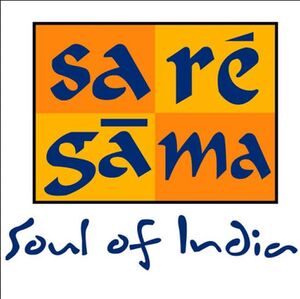
In the case of Saregama India Ltd. & Ors vs Alkesh Gupta & Ors on 1 October, 2013, the plaintiffs alleged that these websites were facilitating the unauthorized downloading of sound recordings in which Saregama held copyright, thereby infringing on their intellectual property rights. The Calcutta High Court stated that permitting streaming or filtering another copyrighted sound recording on a website is not permissible. It is considered to be infringement if the copyrighted content is being downloaded by some other website. Such matters are not allowed under fair use if the website receives a particular fee from the sponsors. The court also opined that such usage can amount to commercial exploitation and cannot come under personal or private law. [6]
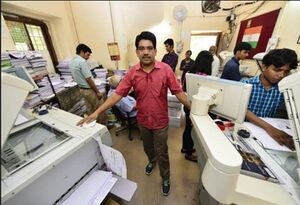
In another landmark case of the University of Oxford and Ors. vs. Rameshwari Photocopy Services and Ors(2016) the concept of fair dealing for educational purposes was used. This case underscored the idea that using copyrighted content for educational use without a profit notice can be as fair dealing under the Act. This case was also significant in shaping a balance between protecting intellectual property rights and ensuring access to educational materials.[7]
INTERNATIONAL EXPERIENCE
The Doctrine of Fair Use allows for limited use of copyrighted material without having to get permission from the rights holders. Each country has their own copyright laws and frameworks that lay down the rights and procedures which leads to varied application and interpretation.
INDIA: Fair Dealing[8]
In India the concept of “Fair Dealing” is governed by Section 52 of the Copyright Act of 1957. This act allows for limited use of copyrighted works for specific purposes like:
(i) private or personal use, including research
(ii) criticising or reviewing any piece of work
(iii) reporting of current affairs, current events and a lecture delivered in public
The Indian approach to “Fair Dealing” is rather specific in its application with the Indian Copyright Act defining fair dealing as an exception to copyright infringement and being very narrow in its application. The Indian law also primarily focuses on exceptions rather than establishing a more general principle.
UNITED STATES: Fair Use [9]
In the US “Fair Use” is the legal doctrine that overrides the owner’s rights and permits limited use of the copyrighted content without their consent. Fair Use is defined under section 107 of the Copyright Right Act 1976[10], which allows use of copyrighted works for purposes such as criticism, comment, news reporting, teaching, scholarship and research without any infringement.

“Justice Joseph Story established the principles of fair use in the US in the case of Folsom v. Marsh. This case also laid the foundation for the four-factor test which is used as the basis of “fair use” doctrine in the US:-
(i) The purpose and character of the use - this point talks about the purpose for which the third party has decided to use the author’s content. If the content is used for profit purposes its less likely to come under fair use and if it is not then it is more likely to fall under the definition of fair use.
(ii) The nature of the copyrighted work - this point talks about whether the original work is factual or creative. Using factual work like news, articles or reports are more likely to be considered to be fair use, whereas using creative works like paintings, music or novels are less likely to be deemed as fair use.
(iii) The amount of copyright work that is used - this factor deals with how much copyrighted work is being utilised. When a small amount of the copyrighted work is used it is more likely to come under the ambit of fair use, but when a great deal of the copyrighted work is used then it has a lesser chance of coming under the ambit of fair use.
(iv) The effect of the use on the market - the copy that was created by the third party has a lesser chance of claiming fair use if the use of the copyrighted work is hurting the original author’s existing or future market.
In the case of Wright v. Warner Books Inc, only 1% of Wright’s unpublished letters were copied, and as the copying was done only for educational purposes, the court ruled that the reuse fell within the parameters of fair use.[11]
AUSTRALIA: Fair Dealing [12]
Australia also follows the “fair dealing” approach, which is clearly outlined in section 40,41,42,43 of the Copyright Act 1968. The act clearly lists the ways one can use copyrighted work legally. So for a copyrighted work to come under “Fair Dealing”, it must come under the following categories:
- Fair Dealing for the purpose of criticism or review
- Fair Dealing for the purpose of parody or satire
- Fair Dealing for the purpose of reporting news
- Reproduction for the purpose of judicial proceedings or professional advice - during a legal proceeding copyrighted works like writings, music, or art can be used without infringing on copyright. Similarly, legal professionals can make use of copyrighted material without infringing the right in order to give professional advice.
UNITED KINGDOM: Fair Dealing [13]
‘Fair dealing’ which is a British concept is more rigid unlike ‘fair use’, which is derived from American law and is more flexible.[14]The United Kingdom also follows the Fair Dealing policy which is discussed under Section 29 and 30 of the Copyright, Designs and Patents Act 1988. Fair Dealing can be used as a valid defence in the following conditions:

- Where copyrighted work is used for research and private study - copyrighted work can be used for non-commercial research and private study without infringing copyright
- Where the copyrighted material is used for criticism, review, and reporting current events
- Fair dealing allows for copyrighted material to be used for criticism or review without infringing copyright provided the material is published, performed or shared with the public and proper credit is given to the original work except in cases where it is impractical to do so.
- Fair dealing again allows for the use of copyrighted work for reporting current events as long as proper credit is given to the original source. However if the reporting is done through audio, video, or broadcasts credit is not required when it is impractical to provide. [15]
FAIR DEALING AND FAIR USE
FAIR DEALING V/S FAIR USE
It is difficult to say which of the concepts is better than the other. Because of its broader applicability and border reach, fair use allows for greater creative freedom and flexibility. Despite the flexibility and freedom that fair use provides, this same flexibility and freedom also creates legal uncertainty. Conversely, fair dealing gives copyright holders more authority over their creations. Since fair dealing's constraints are statutory, there is little to no opportunity for ambiguity, making it more constructive and structured. This also guarantees clearer legal boundaries. However due to its rigid application it can restrict creative and transformative works and it is also to be noted that in fair dealing although the ambiguity is lesser compared to fair use, certain ambiguity still persist
TRADE-OFFS BETWEEN FAIR USE AND FAIR DEALING [16]
GUIDANCE: fair use is often times criticised for not giving creators a clear idea on whether their actions will be considered copyright infringement. Since fair use runs on a case-by-case analysis, individuals would often rely on court to determine legality which can be costly and uncertain. This uncertainty may often times lead to individuals trying to settle claims or obtain unnecessary licenses even when their use might qualify under fair use.
In contrast, the fair dealing approach clearly defines exceptions to copyright infringement thereby allowing users to plan their activities with greater certainty and reducing the risk of unintentional infringement. In summary, fair dealing offers more predictable guidance to users of copyrighted works compared to the fair use model.

FLEXIBILITY: Fair use is considered more flexible because it relies on a broad, four-factor test, while fair dealing follows stricter rules. This flexibility can be both good and bad. On one hand, fair use can be uncertain, making it harder for people to predict what is allowed. However, this uncertainty also helps the law adapt to new situations, especially as technology changes.
Fair dealing, on the other hand, is more rigid, which makes it easier to understand what is allowed and what isn’t. But this same rigidity prevents courts from adjusting the rules to fit new circumstances. Fair use evolves more easily to keep up with modern needs. Because of this adaptability, fair use has helped industries grow and succeed in the U.S.
LEGAL INSTITUTION: the fair dealing doctrine is of the understanding that the legislature has all the primary authority over all of copyright law, including the structure and content of limitations and the exceptions.Courts simply have to apply these exceptions to specific cases without changing or expanding on them.
Fair use, on the other hand, gives courts more power. The U.S. copyright law allows judges to interpret and apply its four general principles to new situations. In doing so, courts play a role in shaping and evolving copyright law over time. Unlike fair dealing, fair use doesn’t assume that only the legislature can decide on copyright limitations and exceptions.
DATA CHALLENGES
Fair dealing in India acts as a statutory exception to copyright infringement, allowing for the use of copyrighted work specifically for private use, research, criticism, review, and reporting of current events. Despite its significance, the doctrine faces several challenges:
- The first setback about the fair dealing doctrine is that it has limited scope as compared to the “Fair Use” doctrine. The “Fair Use” doctrine used in countries like the US, which evaluates the cases based on factors such as purpose, nature, amount, and effect on the market India's fair dealing provisions are far more restrictive.In India, fair dealing allows for limited use of copyrighted content for private or personal use, including research and education; criticism or review; and reporting of current events and current affairs[17]
- The other challenge with India's fair dealing doctrine is in regards to its subjective nature. Even though lawmakers have tried to remove the ambiguity, the doctrine's application largely depends on the specific details of each case which are often unique. This means that while cases may appear similar, their distinct circumstances can lead to different interpretations and outcomes.[18]
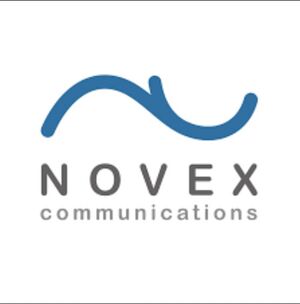
This was explained in the case of Ten Events and Entertainment v. Novex Communications Private Limited & Ors, where the the Delhi High Court addressed the application of Section 52(1)(za) of the Copyright Act 1957, which pertains to the fair dealing exception for playing sound recordings during marriage ceremonies and associated social festivities.
In the final judgment the court dismissed the suit, stating that Ten Events and Entertainment lacked a legitimate cause of action against the defendants. The court held that the plaintiff could not claim the benefits of the exemptions under Section 52(1)(za) for its commercial activities and was not entitled to the declaratory relief sought.[19]
- With the onset and growth of AI in the world it becomes difficult trying to balance intellectual property protection and AI particularly in the context of fair dealing. The first issue is deciding whether AI generated work is considered as a derivative work; if it is then the closely resembling output might need permission while the content that is significantly transformed may come under the ambit of fair dealing. The current framework in India is unable to address such issues therefore leading to legal uncertainties. [20]
RESEARCH THAT ENGAGES WITH FAIR DEALING
IS ‘FAIR USE’ ENOUGH TO PROTECT AI IN THE GLOBAL COURTS?
The doctrine of 'fair use', which permits limited use of protected material without permission, faces significant challenges in dealing with the complexity that is associated with AI training, and in covering non-uniform applications across multiple jurisdictions.
This piece examines the ongoing ANI Media v. OpenAI case in India, which involves ANI accusing OpenAI of infringing its copyright by using journalistic content to train ChatGPT. OpenAI counters that the fair use doctrine applies because its training process is transformative, not a direct copy. This also connects to the greater issue of whether fair use can apply to generative AI models trained on massive datasets with potential copyright material. While courts in the United States have been increasingly more willing to accept transformative use arguments from defendants (e.g., Authors Guild v. Google), to date, Indian courts haven't established any precedent that would be applicable or considered, thus leaving it uncertain whether the court would even enter the adjudication realm.
Adding to the confusion are the lines courts are starting to draw between various types of AI. For instance, in the 2023 case Thomson Reuters v. Ross Intelligence[21], a U.S. court determined that fair use was not applicable. However, importantly, this was not a case involving generative AI. The AI was designed to allow users to retrieve and share judicial opinions based on user queries, which the court assessed as not being transformative use and competing directly with the plaintiff's existing work, prior to concluding that using the materials without permission constituted copyright infringement. The Thomson Reuters ruling underscores that the availability of a fair use defense may depend on the court's view of whether the type of AI at issue is transformative, or merely a replacement for an original copyright work.
Beyond the AI's function, the provenance of the training data has become a key legal dispute. This was the crux of the 2025 ruling in Bartz v. Anthropic PBC[22], where U.S. court addressed the use of pirated material to train a generative AI. The court accepted that training on legally obtained works may be defensible as fair use but would not extend that protection to stated models trained on millions of pirated e-books, essentially noting that fair use claim may be fundamentally undermined if the character of the acquisition was piracy. This brings forth a "clean hands" element to the analysis shifting the lens from the AI's output to the input's legitimacy.
These court rulings indicate the escalating complexity of the issue. As AI continues to evolve and transform, judges and courts across the world will need to evolve their interpretation of what constitutes fair use to find a middle ground between innovating and creating. This additionally suggests we recommend developers, creators, and businesses proactively anticipate and manage intellectual property risks through proactive regulatory compliance, transparency particularly if you had legal counsel, and engaging with experts who specialize in IP law relevant to your trial jurisdiction, as fair use alone may not provide sufficient protection through a legal lens.
CRITICAL ANALYSIS OF THE FAIR DEALING IN COPYRIGHT
The doctrine of fair dealing in Indian copyright law is not only necessary, but an evolving exception to copyright infringement, which aims to balance authors' rights against public access to knowledge, especially, in the educational context.
This article does emphasize, however, that although Indian copyright law is heavily based on UK principles, it now exists as a fairly independent body of law most notably in Section 52 of the Copyright Act, 1957 when setting out a definition of fair dealing and allowing the use of copyrighted materials for certain permitted actions namely education, reporting and judicial proceedings. The author reviews how Indian courts have interpreted fair dealing in a generous way to promote students' access (in particular) to learning materials, but also throughout his discussion of the Delhi University Photocopy case. By analyzing and contrasting cases like Williams & Wilkins Co. v. United States, and subsequent references to legislative and treaty instruments (e.g. TRIPS, Berne Convention), author clearly argues India's pro-user position as opposed to a more creator focused US copyright framework.
The article ultimately proposes that a middle ground is needed in creating copyright laws that balance various interests in copyright, and advance creativity, while also ensuring that laws, particularly in developing countries, are not structures that limit public access. Haniska also acknowledges that the doctrine's validity is presently amorphous without sufficiently informative judicial discourse outlining abuse; thus neither providing certainty to creators nor users for fair dealing tensions.
CONCLUSION
Though creativity needs protection, knowledge needs to be free. As we move further into the future, achieving the balance between copyright and access will be our biggest challenge. it is important to make sure that in protecting the creations of today, we don't crush the innovations of tomorrow.
References
- ↑ 1.0 1.1 https://www.copyright.gov.in/Documents/Copyrightrules1957.pdf
- ↑ 2.0 2.1 Civic Chandran v. Ammini Amma (1996) 1 KLJ 454: 1996 AIHC 3964: (1996) 1 KLT 608: (1996) 16 PTC 670: (1996) 22 CLA (SN 26) 29
- ↑ 3.0 3.1 https://www.copyright.gov.in/Documents/Copyrightrules1957.pdf
- ↑ https://www.wto.org/english/docs_e/legal_e/27-trips.pd
- ↑ 5.0 5.1 https://www.wipo.int/wipolex/en/text/283698#P140_25350
- ↑ Saregama India Ltd. & Ors. v. Alkesh Gupta & Ors., GA No. 3009 of 2013 with CS No. 347 of 2013 (Calcutta HC Oct. 1, 2013)
- ↑ The Chancellor, Masters & Scholars of the University of Oxford & Ors. v. Rameshwari Photocopy Services & Anr., (2016) 160 DRJ (SN) 678 (Del.)
- ↑ https://jlrjs.com/comparative-analysis-between-fair-dealing-and-fair-use/?utm_
- ↑ https://jlrjs.com/comparative-analysis-between-fair-dealing-and-fair-use/?utm_source=chatgpt.com
- ↑ https://lawpath.com.au/blog/fair-dealing-and-fair-use-how-australian-copyright-differs-from-the-usa?utm_
- ↑ Wright v. Warner Books, Inc., 953 F.2d 731 (2d Cir. 1991)
- ↑ http://www5.austlii.edu.au/au/legis/cth/consol_act/ca1968133/s43.html
- ↑ https://www.legislation.gov.uk/ukpga/1988/48/section/29
- ↑ Pushpanjali Sood, 2024, Journal of Intellectual Property Rights, Vol 28, 560
- ↑ https://blog.ipleaders.in/fair-use-under-copyright-law/#Fair_use_in_Australia
- ↑ https://scholarship.law.columbia.edu/cgi/viewcontent.cgi?article=5256&context=faculty_scholarship
- ↑ Pushpanjali Sood, 2024, Journal of Intellectual Property Rights, Vol 28, 560
- ↑ https://www.mondaq.com/india/copyright/1386520/deciphering-the-doctrine-of-fair-dealing-in-the-indian-copyright-context?utm_
- ↑ Ten Events and Entertainment v. Novex Communications Pvt. Ltd. & Ors., CS(COMM) 74/2021, 2023:DHC:3269 (Del. HC May 12, 2023)
- ↑ https://www.iiprd.com/ai-and-fair-use-navigating-legal-challenges-in-india-and-the-united-states/?utm_
- ↑ Thomson Reuters Enterprise Centre GmbH v. Ross Intelligence Inc., C.A. No. 20-613-LPS (D. Del. Sept. 25, 2023).
- ↑ Bartz v. Anthropic PBC, No. 3:23-cv-04570-WHA, 2025 WL 4198223 (N.D. Cal. June 23, 2025).
